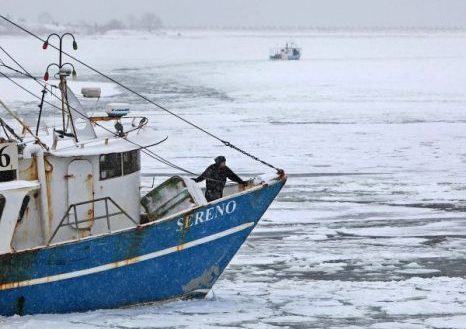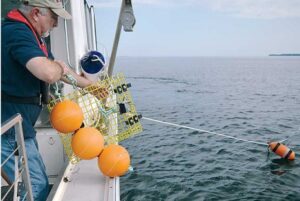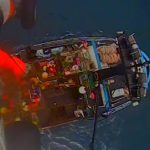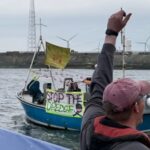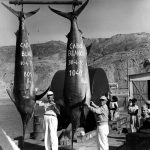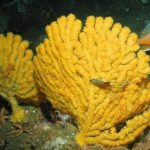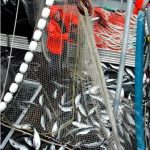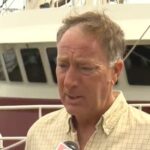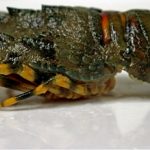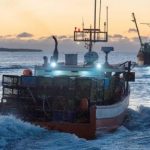Monthly Archives: June 2017
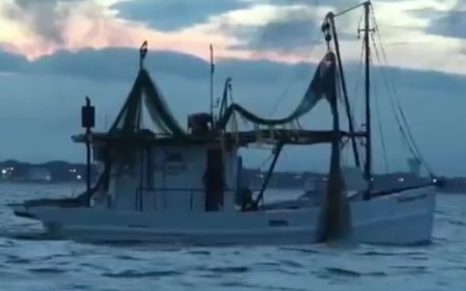
Shrimp season opens in Mississippi Sound
The 2017 brown shrimp season opened 6 a.m. Wednesday and Mississippi Department of Marine Resources officials are hoping the season will be bountiful for recreational and commercial shrimpers in South Mississippi. DMR public affairs director Melissa Scallan said the season opened with almost 700 permits issued. Scallan said there were about 250 boats in the water on Wednesday and most were between Gulfport and Biloxi. Video, click here to read the story Some fishermen, however, were disappointed by their early catches. Shrimper Sam Huynh said, “Little shrimp and a lot of trash.” Video, click here to read the story 09:30
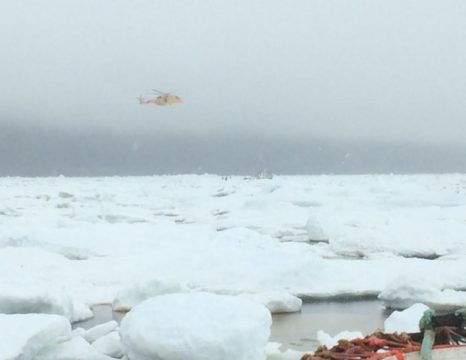
La Scie store owner explains why fishermen risk pack ice – ‘People are desperate’
“Desperate times” are driving fishermen to risk their boats and their lives by heading out into waters clogged with heavy pack ice, according to a store owner in La Scie, who is also the father of one of the crew members rescued Wednesday off Newfoundland’s Baie Verte Peninsula. “This time of year, you got your insurances and payments and things and you got to get fishing. Most people around here haven’t drawn EI [employment insurance] or anything from probably the middle of January,” said Neil Ward, who runs the La Scie Stop ‘N’ Shop. “People are finding the pinch, finding it hard going … People are desperate.” Ward’s son was on the Avalon Princess, which started taking on water Wednesday afternoon and eventually sank.,,”All the inshore boats are not fishing, their EI has run out and it doesn’t seem like anyone gives a crap about it.” click here to read the story 08:18
Pacific Fishery Management Council meeting in Spokane, Washington June 7‐14, 2017
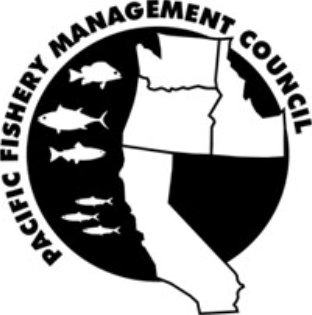 The Pacific Fishery Management Council (Council) and its advisory bodies will meet June 7‐14, 2017 in Spokane, Washington to address issues related to groundfish, coastal pelagic species (CPS), highly migratory species (HMS), Pacific halibut, and habitat matters. For agenda item topics, please click to see the June 7-14, 2017 Meeting Notice WITH Detailed Agenda The Council meeting will be live‐streamed. Click here to Listen to the Live Audio Stream. Enter the Webinar ID The April 2017Â Webinar ID is: 897-986-459 Please enter your email address (required) The meeting will be broadcast live starting at approximately 9 am Pacific Time on Friday, June 9, 2017 For more info, click here 18:32
The Pacific Fishery Management Council (Council) and its advisory bodies will meet June 7‐14, 2017 in Spokane, Washington to address issues related to groundfish, coastal pelagic species (CPS), highly migratory species (HMS), Pacific halibut, and habitat matters. For agenda item topics, please click to see the June 7-14, 2017 Meeting Notice WITH Detailed Agenda The Council meeting will be live‐streamed. Click here to Listen to the Live Audio Stream. Enter the Webinar ID The April 2017Â Webinar ID is: 897-986-459 Please enter your email address (required) The meeting will be broadcast live starting at approximately 9 am Pacific Time on Friday, June 9, 2017 For more info, click here 18:32
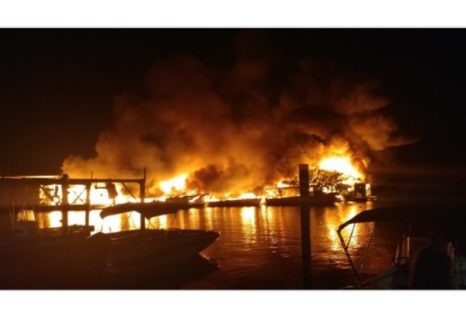
Fundraiser for Fernando Diaz – Lobster business was destroyed by the Vaca Key Marina fire
I want to thank everyone for taking time to view this page. In the early morning hours of June 5, 2017 there was a massive fire at Vaca Key Marina in Marathon, FL. The fire consumed upwards of 200,000 lobster and crap traps and destroyed 3 fishing boats, and gear. Over 1 million dollars in damage. My father, Fernando Diaz has been harvesting lobsters and crabs for almost 36 years in the lower keys area. Unfortunately my father’s boat, and gear were burnt to ashes. His whole life came burning down in a matter of hours. Even at his age of 64, he has thoughts of rebuilding. With the fishing season around the corner (August 2017), any donations will be used to help rebuild and get back on the water to provide for his family. Thank you all very much. click here to visit the fundraiser page. 16:26
FISH-NL questions whether FFAW ‘bought and paid for’ by offshore oil industry
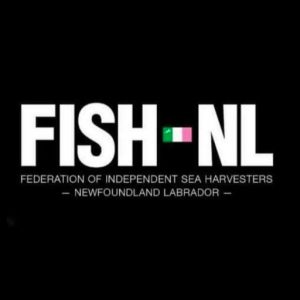 The Federation of Independent Sea Harvesters of Newfoundland and Labrador (FISH-NL) is calling on the FFAW to reveal details of its financial arrangements with the offshore oil industry to address questions of conflict of interest. “It’s time for the FFAW to reveal how much money the union is collecting from the oil industry,” says Ryan Cleary, President of FISH-NL. “Oil and fish don’t mix, but you’d never say that from the union’s cozy relationship with the offshore.” The media has described the amount of seismic activity set to take place off Newfoundland and Labrador this year as “super-sized.” Seismic activity uses high energy, low frequency sound waves that can penetrate thousands of metres below the sea floor, and while the impact on fish stocks and the marine environment is debatable, the FFAW hasn’t whispered a word of concern. click here to read the press release Read the related article – Super-sized seismic activity planned for Newfoundland’s offshore this year click here 13:57
The Federation of Independent Sea Harvesters of Newfoundland and Labrador (FISH-NL) is calling on the FFAW to reveal details of its financial arrangements with the offshore oil industry to address questions of conflict of interest. “It’s time for the FFAW to reveal how much money the union is collecting from the oil industry,” says Ryan Cleary, President of FISH-NL. “Oil and fish don’t mix, but you’d never say that from the union’s cozy relationship with the offshore.” The media has described the amount of seismic activity set to take place off Newfoundland and Labrador this year as “super-sized.” Seismic activity uses high energy, low frequency sound waves that can penetrate thousands of metres below the sea floor, and while the impact on fish stocks and the marine environment is debatable, the FFAW hasn’t whispered a word of concern. click here to read the press release Read the related article – Super-sized seismic activity planned for Newfoundland’s offshore this year click here 13:57
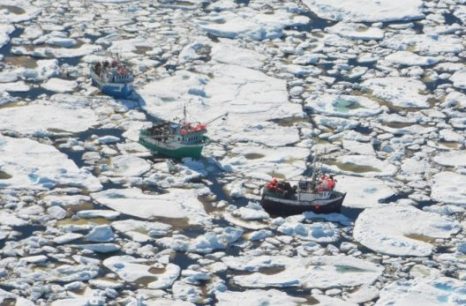
Crew airlifted from stuck fishing vessel Avalon Princess, taking on water near La Scie
Crew on a fishing vessel stuck in sea ice off Newfoundland’s Baie Verte Peninsula have been airlifted off a ship that is taking on water, CBC News has learned. Thick sea ice is keeping coast guard officials from reaching that ship — as well as three others. Jamie Matthews owns one of the stuck boats, and said he heard a mayday call that said one of the boats, the Avalon Princess, was taking on water and the crew had to be airlifted to safety by a Cormorant helicopter Wednesday afternoon.,, Matthews said it may seem foolish to venture out amidst that kind of ice, but after two months of not earning any money, he said he and his four crew were willing to take the risk. click here to read the story 13:35
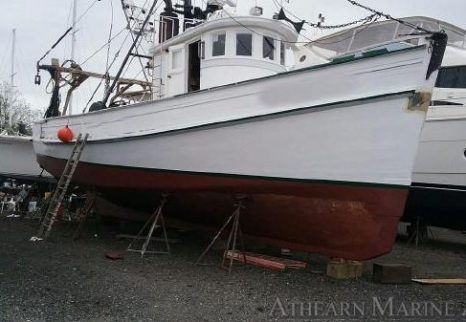
Athearn Marine Agency Boat of the Week: 50′ Stern Dragger, Detroit 8-71, Federal Permits
Specifications, information and 5 photos click here To see all the boats in this series, Click here Nice vessel/permits package for a reasonable price. 12:56
The Elson decision – Ruling that prevents corporate takeover of inshore fishery faces appeal
 The Newfoundland and Labrador seafood industry is behind an appeal of a recent Federal Court of Canada decision that upheld Ottawa’s right to prevent the corporate takeover of inshore fisheries in Atlantic Canada and Quebec. The June 5 appeal was filed at the 30-day deadline. No court date has yet been set to hear the appeal. Last month, Justice Cecily Strickland ruled the federal fisheries minister was entitled to strip fishing licences from Labrador fisherman Kirby Elson. Elson was a placeholder on a snow crab licence controlled by two related Newfoundland processing companies. The Elson decision was hailed as a victory by some inshore fisheries organizations and the Department of Fisheries and Oceans. They argue controlling agreements are used by companies to get around longstanding policies that local fishermen control inshore licenses and the profits that come from them. click here to read the story 11:46
The Newfoundland and Labrador seafood industry is behind an appeal of a recent Federal Court of Canada decision that upheld Ottawa’s right to prevent the corporate takeover of inshore fisheries in Atlantic Canada and Quebec. The June 5 appeal was filed at the 30-day deadline. No court date has yet been set to hear the appeal. Last month, Justice Cecily Strickland ruled the federal fisheries minister was entitled to strip fishing licences from Labrador fisherman Kirby Elson. Elson was a placeholder on a snow crab licence controlled by two related Newfoundland processing companies. The Elson decision was hailed as a victory by some inshore fisheries organizations and the Department of Fisheries and Oceans. They argue controlling agreements are used by companies to get around longstanding policies that local fishermen control inshore licenses and the profits that come from them. click here to read the story 11:46
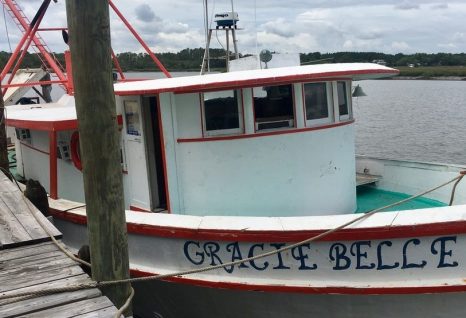
Beaufort County residents step in to raise money for damaged F/V Gracie Belle
The 80-foot shrimping trawler “Gracie Belle” still sits at a dock on Saint Helena Island, despite the fact that it was meant to be out catching Beaufort County’s food. Owner Craig Reaves said the vessel was heavily damaged after getting caught in severe weather two weeks ago on opening day of the season. “I called the captain on the phone and he said that the mast had broke and there was an outrigger down. Basically, you know, he panicked,” Reaves said. Reaves said this all happened around 3 a.m. off of Pritchards Island. He said his crew felt in danger, and called the U.S. Coast Guard to be rescued. The crew had to leave “Gracie Belle” at sea. When Reaves went to recover his vessel Wednesday morning, the damage was worse than he was originally told. click here to read the story, and click here for the fundraiser Save Gracie Belle 10:00
Income bridging desperately needed for harvesters and plant workers without income due to ice
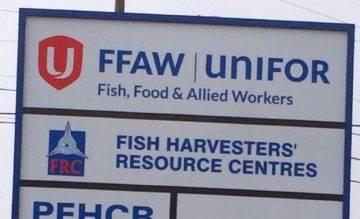 Harvesters and plant workers are struggling to feed their children and pay their bills, with some having been without income for over two months due to severe ice conditions that prevents the fishery from starting in many parts of the province. The situation has gone from bad to dire, and action in the form of income bridging from the federal government is long overdue. Having gone without any income for over two months, many harvesters feel they are left with no other option than to risk their gear and their own personal safety in order to go fishing through pack ice conditions. click here to read the press release 09:10
Harvesters and plant workers are struggling to feed their children and pay their bills, with some having been without income for over two months due to severe ice conditions that prevents the fishery from starting in many parts of the province. The situation has gone from bad to dire, and action in the form of income bridging from the federal government is long overdue. Having gone without any income for over two months, many harvesters feel they are left with no other option than to risk their gear and their own personal safety in order to go fishing through pack ice conditions. click here to read the press release 09:10
Scandinavian biologists see threat in crossbreeding by American, European lobsters
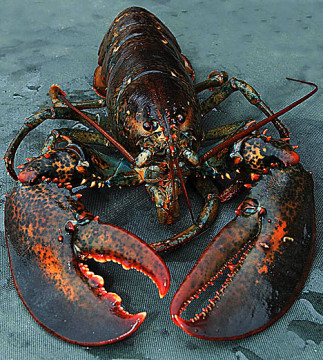 Scandinavian biologists say American and European lobsters are crossbreeding and their offspring can survive in European waters, but it is too early to tell if the hybrids can reproduce. Susanne Eriksson of the University of Gothenberg in Sweden and Ann-Lisbeth Agnalt of the Institute of Marine Research in Norway presented their findings on the threat that American lobsters found in the northeast Atlantic Ocean pose to their smaller European cousins Tuesday during the second day of the International Conference and Workshop on Lobster Biology & Management in Portland.,,, The EU said it might one day explore other protective measures that would not be so disruptive to trade if Sweden returns with further proof of an invasion. click here to read the story 08:38
Scandinavian biologists say American and European lobsters are crossbreeding and their offspring can survive in European waters, but it is too early to tell if the hybrids can reproduce. Susanne Eriksson of the University of Gothenberg in Sweden and Ann-Lisbeth Agnalt of the Institute of Marine Research in Norway presented their findings on the threat that American lobsters found in the northeast Atlantic Ocean pose to their smaller European cousins Tuesday during the second day of the International Conference and Workshop on Lobster Biology & Management in Portland.,,, The EU said it might one day explore other protective measures that would not be so disruptive to trade if Sweden returns with further proof of an invasion. click here to read the story 08:38
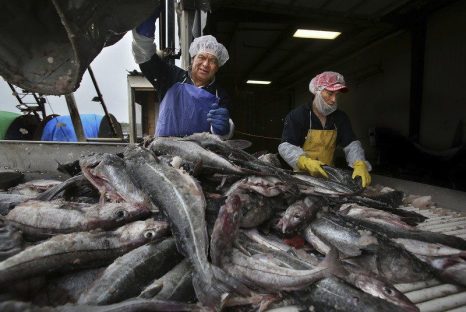
Seafood supplier tries to make inroads with local eateries for Gloucester-landed fish
Frank Ragusa is making a point, leaning forward in his chair and punctuating each sentence by banging his hand on the conference table, producing thumps so loud they later sound like explosions on the recording of the conversation. In between bursts of percussion, the chief executive officer and partner in Gloucester’s Finest Seafood makes the same impassioned point he has been making since he returned to Cape Ann two years ago from Seattle as the director of fresh seafood at Gloucester Seafood Processing. The point is this: The Gloucester story still plays in the farthest reaches of the nation. The saga of America’s oldest commercial fishing port, of slicker-clad, fishermen wrestling fresh marine life out of the cold waters of the Atlantic, still strikes a chord. Out there. click here to read the story 08:06

The first ever major UN Oceans Conference is underway though it is about oceans in name only.
Everything at the conference about the oceans comes within the context of the overlords of lands. Lofty statements call for more rules and with those rules more soldiers to rule over the oceans. It is as if the delegates watched nothing but swash buckling pirate movies their whole lives. Someone must speak for the oceans that need our help to restore them to historic health and abundance. If you gaze upon the two images of this planet above you will see one image shows the common view where land is prominent. The other image is more accurate as this blue planet is 72% oceans. Even of the 28% that is land barely half of that is free of ice and capable of harbouring life. June 5-9 is the UN Ocean Conference, the high-level United Nations Conference to support the implementation of Sustainable Development Goal 14: Conserve and sustainably use the oceans, seas and marine resources for sustainable development. Read the article here 22:12
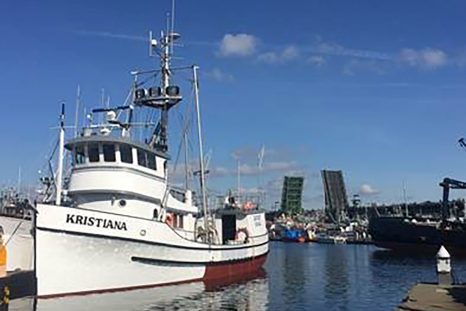
Meet the skippers of Fishermen’s Terminal
The boats in the commercial fishing fleet at Fishermen’s Terminal range from 30 to 250 feet long, depending on the type of gear used. Think trawlers, gillnetters, purse seiners, longliners and pots. Although most skippers set sail in the spring (and return late summer or fall), preparation for the season starts several weeks or months ahead of time. Michael Offerman, 40, from Edmonds, starts thinking about the fall and winter projects he needs to tackle on his 69–foot boat, Kristiana, while out at sea during the summer. Typical post-season touch-ups include painting, remodeling and electrical and mechanical tweaks, followed by a thorough inspection. click here to read the story 13:02
FISH-NL to Government of Canada – Stop stringing along harvesters impacted by severe ice conditions
 The Federation of Independent Sea Harvesters of Newfoundland and Labrador (FISH-NL) is calling on the Government of Canada to stop stringing along the province’s inshore harvesters and start making decisions regarding help for those impacted this year by severe ice conditions. “This delay by the Government of Canada is a form of mental torture,” says Ryan Cleary, President of FISH-NL. “Harvesters are continually told a decision will come soon, a decision will come tomorrow, but tomorrow never comes. Meantime, harvesters, their families, and rural communities are suffering.” click here to read the press release 11:07
The Federation of Independent Sea Harvesters of Newfoundland and Labrador (FISH-NL) is calling on the Government of Canada to stop stringing along the province’s inshore harvesters and start making decisions regarding help for those impacted this year by severe ice conditions. “This delay by the Government of Canada is a form of mental torture,” says Ryan Cleary, President of FISH-NL. “Harvesters are continually told a decision will come soon, a decision will come tomorrow, but tomorrow never comes. Meantime, harvesters, their families, and rural communities are suffering.” click here to read the press release 11:07
American Lobster Settlement Index | Update 2016
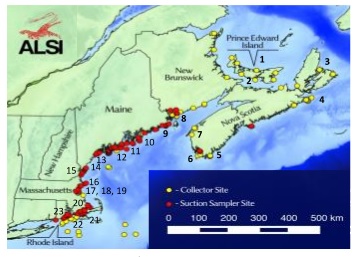 Just as US and Canadian lobster landings seem to be breaking all the records, settlement has been dipping to all-time lows. The disconnect is causing a lot of people to scratch their heads. Harvests on both sides of the border have sustained an almost uninterrupted surge in abundance for more than a decade. By 2015, US harvests had nearly doubled since 2003, and since 2000 for Canada, making for a combined volume of 157 thousand metric tons (346 million lbs) with a value of $US1.48 billion. Fishery independent state and federal surveys leave no doubt that there have been real and dramatic increases in abundance. While the 2016 landings are still being tallied, if Maine’s impressive performance is any indication (Maine harvests about 80% of the US share), 2016 is likely to go down as another banner year both in volume and value. By all indications, the reproductive output of the American lobster population should be greater than ever, but for some reason it does not seem to be translating into record breaking settlement. click here to read the report 10:45
Just as US and Canadian lobster landings seem to be breaking all the records, settlement has been dipping to all-time lows. The disconnect is causing a lot of people to scratch their heads. Harvests on both sides of the border have sustained an almost uninterrupted surge in abundance for more than a decade. By 2015, US harvests had nearly doubled since 2003, and since 2000 for Canada, making for a combined volume of 157 thousand metric tons (346 million lbs) with a value of $US1.48 billion. Fishery independent state and federal surveys leave no doubt that there have been real and dramatic increases in abundance. While the 2016 landings are still being tallied, if Maine’s impressive performance is any indication (Maine harvests about 80% of the US share), 2016 is likely to go down as another banner year both in volume and value. By all indications, the reproductive output of the American lobster population should be greater than ever, but for some reason it does not seem to be translating into record breaking settlement. click here to read the report 10:45
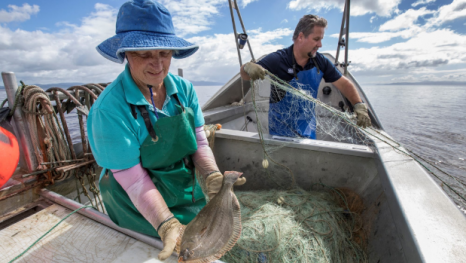
Meet Brendan Taylor, one of Foodstuffs’ ‘best’ commercial fishermen
He’s a top commercial fisherman who lives in south Auckland and works from a boat he built with his own hands. Brendan Taylor runs a business based in Manurewa that sees him catch and supply fresh fish to supermarket company Foodstuffs. He spent his childhood fishing for flounder with a small net on the Manukau Harbour.,,, Foodstuffs head of seafood David Jose says many people have the perception commercial fishing companies are “huge industrial operations” with large boats that trawl oceans. That’s not the case in New Zealand though, as he describes Taylor as one of the company’s best commercial fishermen. Video, click here to read the story 10:17
Mystery of world’s worst toxic algal blooms solved: Cold water upswells from the deeper ocean
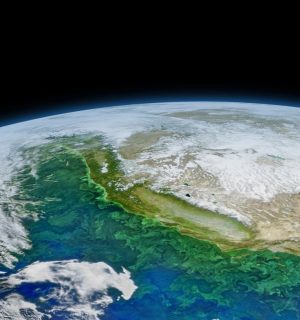 The most deadly algal blooms have extremely high levels of the neurotoxin domoic acid, which causes paralytic food poisoning and in rare cases amnesia or death if people eat contaminated shellfish. Scientists now think they have discovered why such blooms happen. It was previously thought that a pocket of warm water, known as a ‘warm blob’, was to blame. A study in Geophysical Research Letters has now identified that in fact upwelling of cold water from the deep oceans was responsible. click here to read the story 09:31
The most deadly algal blooms have extremely high levels of the neurotoxin domoic acid, which causes paralytic food poisoning and in rare cases amnesia or death if people eat contaminated shellfish. Scientists now think they have discovered why such blooms happen. It was previously thought that a pocket of warm water, known as a ‘warm blob’, was to blame. A study in Geophysical Research Letters has now identified that in fact upwelling of cold water from the deep oceans was responsible. click here to read the story 09:31
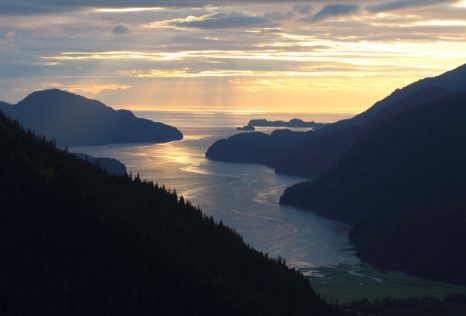
Too many pink salmon in Kachemak Bay?
Tucked into a narrow fjord on the south side of Kachemak Bay is a small lagoon, 700 feet wide, and only a couple thousand feet long. At low tide, a salty trickle connects it to the ocean. At high tide, at the height of the summer, treble hooks fly between a flurry of skiffs as salmon snaggers circle the net pens in the center of the lagoon. Seines scoop up tens of thousands of fish in an attempt to pay for the hatchery, as hatchery operators collect eggs from the fish that swarm the creek. A few weeks later, carcasses rot, eggs incubate and Tutka Lagoon fades back into relative obscurity. Until this year, that is, when a wave of controversy spilled out through that narrow channel like the 100 million pink salmon they hope to release, flooding across Kachemak Bay State Park to Homer, up Cook Inlet, and down to Juneau, prompting the governor to send a fleet of commissioners to brace against the wave. click here to read the story 09:03
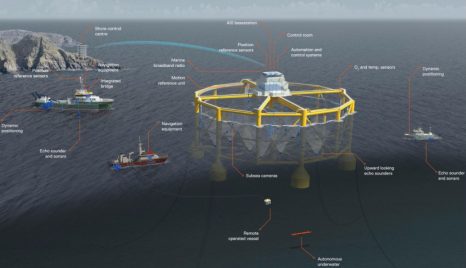
21st Century salmon
As Alaska struggles to maintain commercial productivity in its most-valuable, wild-salmon fisheries, competition in the fish market is looming on every horizon. Land-based salmon farms are popping up in odd places across the U.S., and the Norwegians and the Chinese are teaming to take salmon farming to new heights or, more accurately, new depths offshore. China.org today reported the first delivery of a deepwater, “intelligent offshore farm” to the Norwegian company SalMar ASA. “Ocean Farm 1” is designed to be positioned in water 300 to 600 feet deep where currents can sweep it clean in four dimensions while computers monitor its performance. “It is the world’s first offshore salmon farming equipment built on the same principle as semisubmersible installations used in the offshore oil and gas drilling sector,” the Chinese national website said.,, Open-ocean fish farms have been touted as one path to greening a business sometimes blamed for polluting protected bays and coves with fish waste. click here to read the story 08:38
NOAA sets table for seismic testing offshore, including off South Carolina
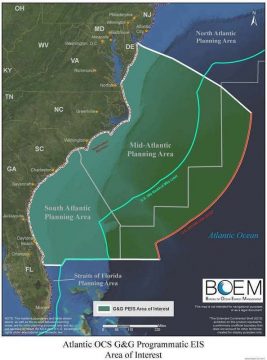 The Trump administration took a big step Monday toward permitting seismic testing for the presence of oil and natural gas in the offshore Atlantic, issuing the rules for how the tests take place. The tests would provide data sold to drilling companies to locate where to drill test wells. The move had been expected after President Donald Trump in April ordered a review of the Obama administration’s closings and lease denials of potential new offshore drilling sites.,, “Why would the government even think about allowing the filthy, accident-prone oil industry to proceed with this dangerous procedure that so greatly affects the same wildlife we’re all trying to protect through restrictive fishing regulations?” asked Rick Baumann, the owner of Murrells Inlet Seafood. click here to read the story 21:14
The Trump administration took a big step Monday toward permitting seismic testing for the presence of oil and natural gas in the offshore Atlantic, issuing the rules for how the tests take place. The tests would provide data sold to drilling companies to locate where to drill test wells. The move had been expected after President Donald Trump in April ordered a review of the Obama administration’s closings and lease denials of potential new offshore drilling sites.,, “Why would the government even think about allowing the filthy, accident-prone oil industry to proceed with this dangerous procedure that so greatly affects the same wildlife we’re all trying to protect through restrictive fishing regulations?” asked Rick Baumann, the owner of Murrells Inlet Seafood. click here to read the story 21:14
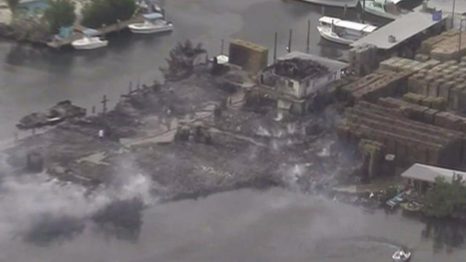
Massive Marathon marina fire destroys home, three lobster boats, fishing gear
The Monroe County Sheriff’s Office credits Deputy Seth Hopp who was driving southbound near 15th Street at 2:35 a.m. When he saw billowing black smoke that was moving from the Vaca Key Marina and called the fire into Sheriff’s dispatchers and pulled in to the parking lot to investigate.,,,When firefighters arrived, they found that the flames had spread to a nearby house on an acre-sized lot filled with wooden lobster traps.,,, With the 37 to 47-foot lobster boats valued at an estimated $150,000 to $300,000 and lobster traps valued at $35 to $40 each, the total damage likely will be more than $1 million. “The traps were stacked 18 to 20 feet high,” Monroe County Fire Rescue Deputy Fire Marshal Craig Marston said. “The [commercial] lobster fishermen were getting them ready to put in the water the first of August for the new season.” click here for video, read the story 17:23
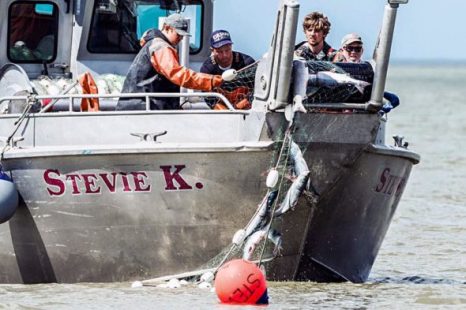
From Flint to Alaska, fishing for hope
The backstory of Seahawks RB Thomas Rawls inspired an Alaska commercial fisherman from Bellingham to go to Flint, Mich., to give a young man a chance to pay for college a hard way. Jawanza Brown recalled the time Seahawks RB Thomas Rawls spoke to the Boys & Girls Club in their hometown of Flint, Mich. Rawls was playing football at the University of Michigan, Brown was a star-struck kid. “I remember he talked about pushing through adversity by saying, ‘I was built for this,’” Brown said by phone the past week. “That quote stuck in my head. I’m keeping that in mind this summer.” Brown wants to prove he is built for something too: Crewing on a 32-foot gillnetter in Bristol Bay, Alaska, home to the world’s largest, most intense salmon fishery. Even though he’s never done such a thing. Even though he’s never been on a commercial boat. Even though he’s left the state of Michigan but once — to Ohio. click here to read the story 16:32
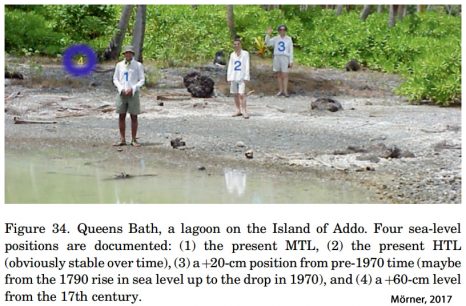
Sea Levels Are Stable To Falling At About Half Of The World’s Tide Gauges
A few years ago, a comprehensive analysis of selection bias in tide gauge measurements between 1807-2010 indicated that (a) sea levels are only rising at a rate of about 1 mm/yr (as of 2010), and (b) a total of 65% of the world’s tide gauges have recorded stable to falling sea levels. Out of a database of over 2,100 tide gauge measurements available from the Permanent Service for Mean Sea Level, NOAA has selected 240 tide gauges for their analysis of global-scale sea level rise. Of these, there are about 15 gauges that did not extend far enough into the last few decades (for example, Latvia, Antarctica, Ghana, Colombia), precluding a recent trend analysis. Of the remaining 225 tide gauges in the NOAA database, there are at least 100 located in regions where sea levels are stable (no significant change in either direction) or falling. A graphical illustration of these non-trend tide gauge measurements is provided below. click here to read the story, see graphs 13:49
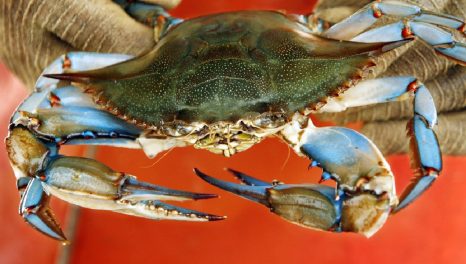
No free market in Maryland crab picking
I don’t doubt how productive and valuable Mexican immigrant crab pickers in Maryland are. Their bosses say they’re the heart of the crab industry. But upon closer inspection, it seems the seafood companies don’t really think this important work is worth a fair wage. The companies have lobbied tenaciously to make sure that the legal and regulatory framework of the H-2B visa program allows them to legally underpay their workers compared to what they would have to pay to attract workers in the free market …Maryland crab is delicious, if you can afford it. At $30 to $50 per pound, it’s certainly not cheap. That’s why I was curious to know just how much these H-2B workers were valued by their employers. click here to read the story 11:57
Mid-Atlantic Fishery Management Council Meeting in Norfolk, VA June 6 – 8, 2017
The public is invited to attend the Mid-Atlantic Fishery Management Council’s Tuesday, June 6, 2017 – Thursday, June 8, 2017 Hilton Norfolk The Main, 100 East Main St. Norfolk, VA. Briefing documents will be posted as they become available (click here). For online access to the meeting, enter as a guest (click here) 11:10
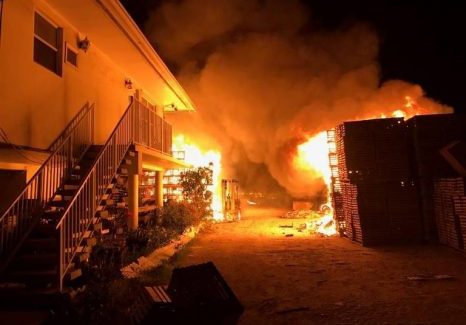
Major marina fire shuts down Overseas Highway in Keys
A massive marina fire in the Florida Keys shut down the Overseas Highway early Monday around Mile Marker 47.5, according to the Monroe County Sheriff’s Office. The fire at Vaca Key Marina in Marathon started around 2:30 a.m and burned for several hours, said Deputy Becky Herrin, a sheriff’s spokeswoman. Herrin said firehoses blocked U.S.1, which stretches from Key Largo to Key West. The road reopened to traffic before 8 a.m., according to the sheriff’s office. The call came in as a boat fire, but when firefighters arrived they found a house burning along with an acre lot filled with wooden lobster traps, said Monroe County spokeswoman Cammy Clark. click here to read the story 10:18
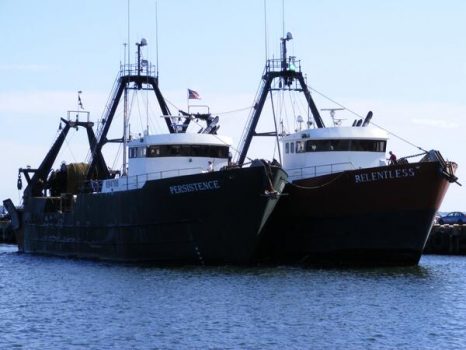
Always Top Quality! Your Seafreeze Ltd. Preferred Price List for June 2017 Has Arrived!
Contact our sales team today @ 401 295 2585 or 800 732 273 Click here for the complete price list from Seafreeze Ltd. – We are Direct to the Source-We are Fishermen-We are Seafreeze Ltd! Visit our website! 10:01
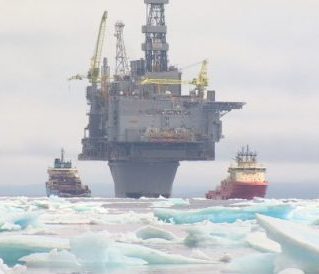
Hebron oil platform tow-out halted en route to Grand Banks
Just two days after its long-awaited tow out of Bull Arm, the Hebron oil platform’s journey to its drilling site in Newfoundland’s Grand Banks has been delayed. The platform left Bull Arm in Trinity Bay on Saturday. However, the platform and the eight tug boats that are towing it once again stopped Sunday evening, according to a notice from the Department of Fisheries and Oceans. The notice, which was sent out 8:30 p.m. NT on Sunday, did not specify if the stoppage was due to ice or weather. However, a source told CBC the delay was caused by heavy fog, and said vessel operators needs to maintain visuals on sea ice conditions as ice radars are still a developing technology. click here to read the story 09:33









